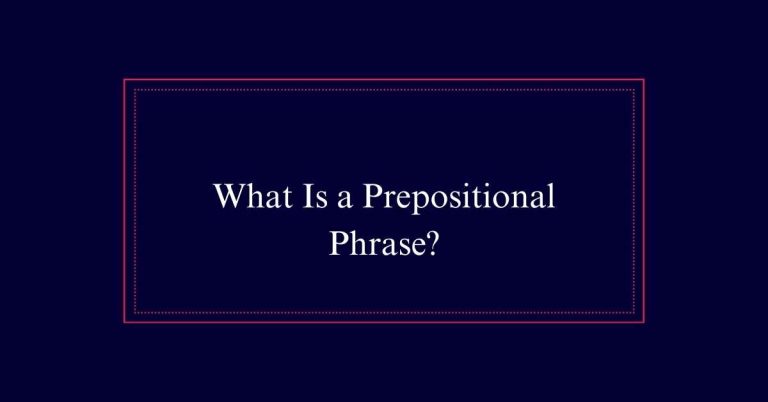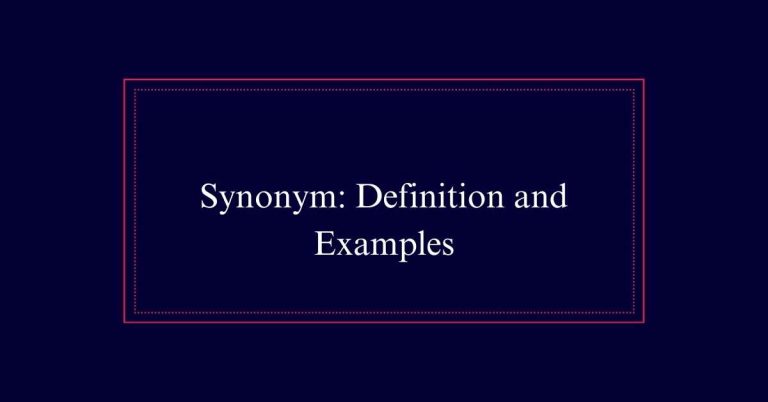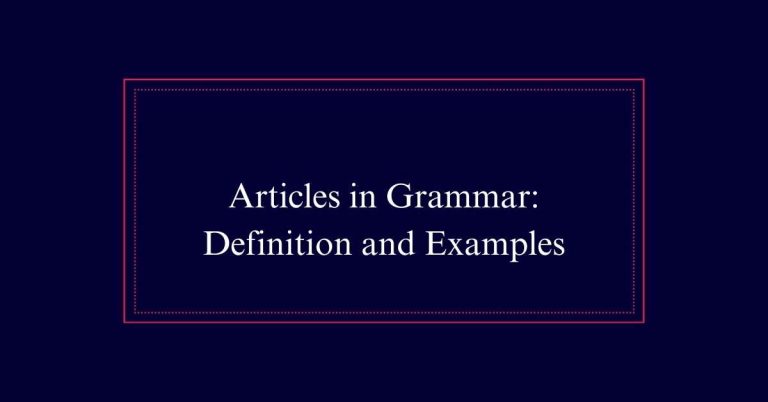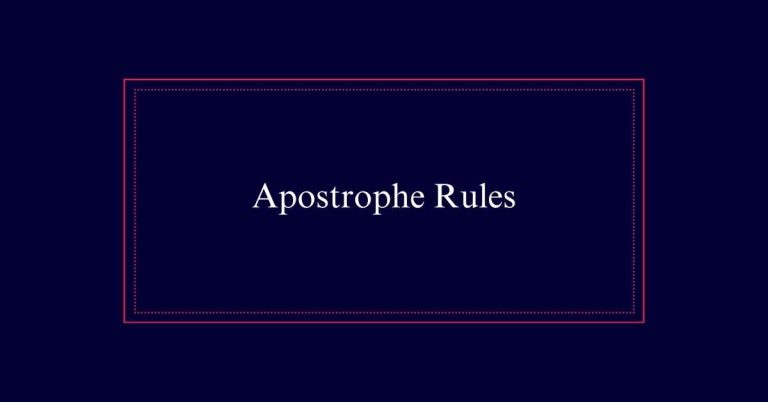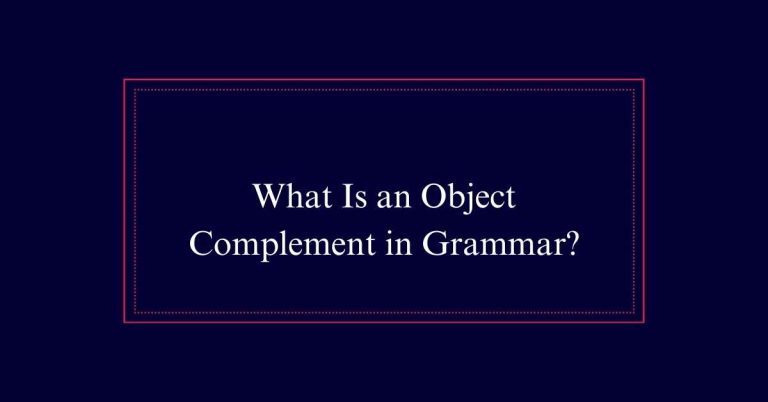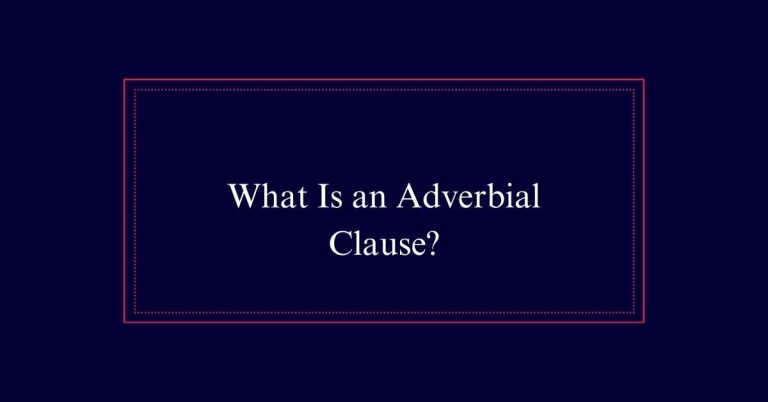What Part of Speech Is “Was”?
‘Was’ is a verb that serves as the past tense form of ‘to be’ for both first- and third-person singular subjects. It indicates past states of being or actions and often acts as a linking verb, connecting the subject to its complement. For example, in the sentence “She was happy,” ‘was’ links ‘she’ to the adjective ‘happy.’ Additionally, ‘was’ can form past continuous tense, as seen in “He was running.”
Understanding Parts of Speech
In English grammar, understanding parts of speech is fundamental for constructing clear and effective sentences. There are eight parts of speech:
nouns, pronouns, adjectives, verbs, adverbs, prepositions, conjunctions, and interjections.
Nouns represent people, places, concepts, or things. Pronouns replace specific nouns to avoid repetition.
Adjectives describe or modify nouns, providing more detail.
Verbs indicate actions or states of being.
Adverbs modify verbs, adjectives, or other adverbs, often describing how, when, or where something happens.
Prepositions show relationships between nouns and other words in a sentence.
Conjunctions connect words, phrases, or clauses.
Interjections express strong emotions or sudden bursts of feeling. Knowing these parts of speech helps create well-structured sentences.
‘Was’ as a Verb
The word ‘was’ functions as a verb to describe past states of being or actions. It is the past tense form of ‘to be’ for first- and third-person singular subjects. It helps depict situations or actions that have already occurred. For example, in the sentence “She was happy,” ‘was’ indicates her happiness in the past. Additionally, ‘was’ can serve as an auxiliary verb to form past continuous tense, such as “He was running.
Here is a table to illustrate its usage:
| Sentence Example | Explanation |
|---|---|
| She was a teacher. | Describes a past profession. |
| The cake was delicious. | Describes a past state of being. |
| He was studying all night. | Indicates continuous past action. |
| They were there. | Describes a past location. |
Role of ‘Was’ in Sentences
Was’ acts as a linking verb that connects the subject to its complement, explaining the subject’s state of being. It functions to express qualities or conditions of the subject without indicating action.
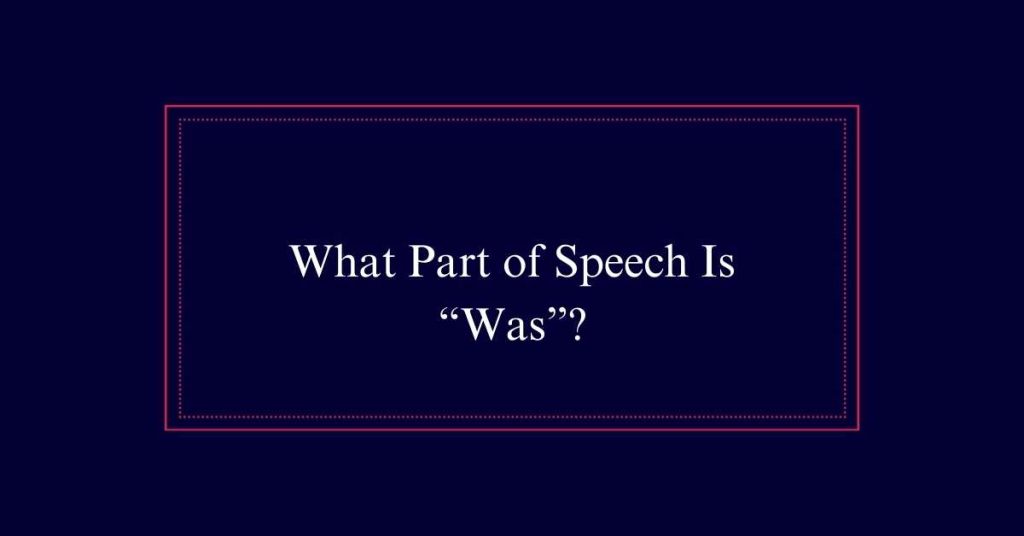
For instance, in the sentence ‘The sky was clear,’ ‘was’ links ‘sky’ to ‘clear,’ describing the sky’s state.
In sentences, ‘was’ serves various roles:
- Describes states of being: ‘The room was silent.’
- Connects to descriptive adjectives: ‘She was happy.’
- Links to noun complements: ‘He was a teacher.’
- Forms past progressive: ‘She was singing.’
- Indicates past conditions: ‘The weather was stormy.’
Using ‘was’ effectively makes writing clear and precise, emphasizing the state or condition of the subject in the past.
Conveying Time With ‘Was’
Understanding how ‘was’ conveys time is key to mastering past tense in English. ‘Was’ indicates actions or states of being that occurred in the past. It is the past tense of the verb ‘to be’ for first- and third-person singular subjects.
For example, in the sentence ‘She was happy,’ ‘was’ shows that her happiness is in the past. This usage helps specify when actions or conditions took place. Using ‘was’ also helps to create a clear timeline in storytelling or explanations.
For instance, ‘He was studying all night’ indicates the action happened previously. Mastering ‘was’ is essential for clear, accurate communication about past events.
Common Mistakes With ‘Was
Mistaking ‘was’ for an adjective or adverb is a common error in grammar. ‘Was’ is a verb that indicates a past state or action, not a descriptive word like adjectives or adverbs.
Understanding its proper use is essential for grammatical accuracy. Here are some common mistakes to avoid:
- Misidentifying ‘was’ as an adjective: ‘Was’ does not describe a noun.
- Confusing ‘was’ with adverbs: ‘Was’ does not modify verbs, adjectives, or other adverbs.
- Overlooking ‘was’ as a linking verb: It connects the subject to a state of being.
- Incorrectly placing ‘was’ in sentence structure: It should align with past tense verbs.
- Misusing ‘was’ in non-past contexts: Reserve ‘was’ for past references only.
Is “Was” Considered a Verb in the Context of Verbing?
In the context of understanding verb formation, “was” is considered a verb when used as the past tense form of the verb “to be.” In the sentence “He was singing,” “was” is functioning as the verb, indicating the action in the past. Understanding verb formation helps identify the role of “was” in this context.
Frequently Asked Questions
Can ‘Was’ Be Used in Passive Voice Constructions?
Yes, ‘was’ can be used in passive voice constructions. It functions as an auxiliary verb, indicating past actions. For example: “The book was written by the author.” It helps form the passive voice.
What Are Some Examples of ‘Was’ in Conditional Sentences?
“Was” appears in conditional sentences to express hypothetical situations. Examples include: “If she was here, she would help” and “If he was more careful, he wouldn’t have made that mistake.”
How Does ‘Was’ Compare to Other Past Tense Forms of ‘To Be’?
Was” is the first- and third-person singular past tense of “to be.” It differs from “were,” which is used for second person singular and all plurals. Both forms indicate past events or states of being.
Is ‘Was’ Used Differently in British and American English?
The use of ‘was’ does not differ noticeably between British and American English. Both dialects employ ‘was’ as the past tense of ‘to be’ for first- and third-person singular subjects, maintaining uniform grammatical rules.
Can ‘Was’ Be Used in Reported Speech?
Yes, ‘was’ can be used in reported speech. It indicates past actions or states. For example, “He said he was tired.” It helps convey what someone said about their past experience or condition.

